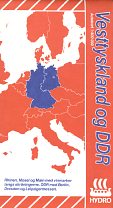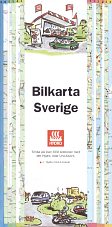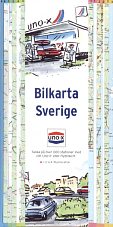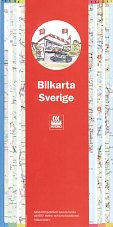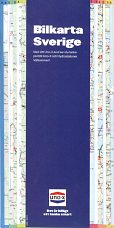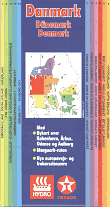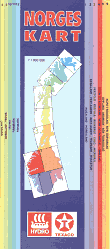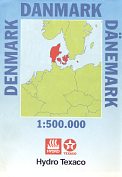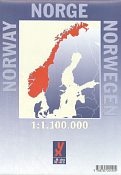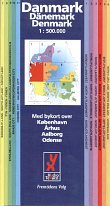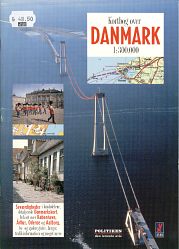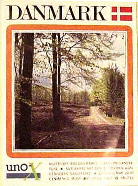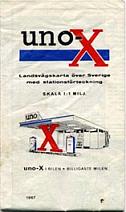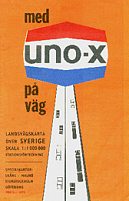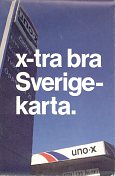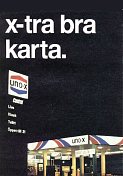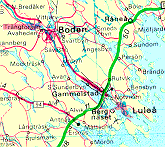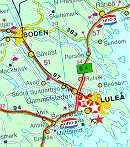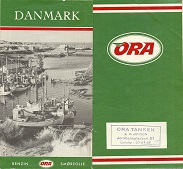HYDRO
HydroTexaco Uno-X ORA
Brief History
Norsk Hydro was incorporated in 1905 to operate hydro-electric power stations in Norway. Over the next 70 years it expanded into energy intensive industries such as aluminium and fertilisers, but it always kept an involvement in energy. It was therefore natural for it to become involved in exploration and production of oil in the North Sea in the 1970s, and to acquire a 30% stake in the Norwegian oil refinery. A first foray into Norwegian petrol marketing in the early 70s was short-lived, and it agreed instead to work with Norol (part of Statoil).
|
Hydro was free to expand in Denmark so it acquired the very small KH chain. Entering into a partnership with Sweden's Axel Johnson in 1978, it branded larger stations as Viking and smaller discount sites under the Spar name. In 1985 it acquired Mobil's 200 Swedish outlets, introducing the Hydro name also replacing Viking in Denmark. |
|
Lacking critical mass outside Sweden, on 1 January 1995 it merged its Danish and Norwegian operations with those of Texaco to form HydroTexaco; Uno-X was retained as a discount unmanned chain in Denmark, absorbing Texaco's Bonus outlets, and introduced into Norway. HydroTexaco also exported the automat concept into the three Baltic states, but sold its outlets there to the local firm Alexela in 2005/6. In October 2006 the HydroTexaco operations in Scandinavia were sold to the Norwegian Reitan Servicehandel group to form YXEnergi, and two months later, Hydro agreed to merge its oil and gas interests with its old rival Statoil. In April 2009 the Swedish Hydro and Uno-X chains were sold to the Finnish company St1, which had had a small presence in Sweden since 2004.
Maps: Hydro
|
|
|
|
|
|
Hydro maps are most commonly found from Sweden, although the company does not issue new editions each year. The 1992 map (left) had a simple outline of Sweden on the cover whereas the 1996 design was more colourful showing a boxcar racer. Both maps were produced by Lantmäteriet KartCentrum of Stockholm, although the older map was at a smaller scale (1:1,200,000) and showed Hydro locations with the Viking long boat logo. The newer map at 1:1,000,000 uses simpler computer based cartography. The next two maps date from 1998 and 2000; although the cartography is the same as 1996, towns with Hydro or Uno-X stations are once again marked. The final map on the top row dates from 1997 and shows how Uno-X has adopted the Hydro style of map. Recent Uno-X editions are less common as the brand is now mainly used on unmanned automat outlets that have only a limited need for maps.
|
|
|
|
|
|
From 2003 maps for both companies moved to a folding system similar to that of QuickMap, with the country dissected into six horizontal sections, the map arranges for the Northern half of the country to be at 1:1,200,000 and the Southern at 1:1,000,000 retaining KartCentrum's computerised cartography. Both versions again mark all Hydro or Uno-X locations; the 2003 maps (left two images) fail to distinguish between them, but the 2005 ones (right two images) mark each location with the logo of the appropriate brand, as can be seen in the map extract (at larger than true size).
Maps: HydroTexaco
|
|
|
HydroTexaco's first maps were prepared using FOLIA/LegindKort's QuickMap System, where the countries were divided into 10 or 12 small sections, each readily accessible from a colour-coded folding system on the front. (This is a little different from the Foldex system, but both were designed to make it faster to use a map.) Both maps also located HydroTexaco stations using four different sizes of the dual logo dependent on the number of sites in a town. At this stage the re-branding exercise on service stations consisted of little more than adding the other company's logo on a sign above or below the existing sign. |
|
|
|
|
|
|
HydroTexaco's next maps abandoned the QuickMap System, but still use computer cartography by FOLIA/Legindkort. The Denmark and Norway maps shown were reversible titles - the first shown dates from around 1996. The next map was almost certainly produced in the following year and carried the new logo, and shifted towards a darker blue; both sides of this version located HydroTexaco and unmanned (Automat) Uno-X stations. By 2000, the Folia cartography was back on the QuickMap system, but restricted to just Denmark (it is assumed that a Norwegian version was also sold). For motorists wanting greater detail, HydroTexaco briefly also sold a branded softback atlas at 1:300,000. Jointly produced with the leading Danish newspaper Politiken, this does not mark service stations on the map, although it does list the addresses of the 400 outlets. The cover shows construction of the Storebælt bridge - Europe's longest - which opened in 1998.
|
|
|
|
|
|
Following its sale in October 2006, the HydroTexaco name was changed to YXEnergi; no maps are known yet carrying the YX name.
Maps: Uno-X (Denmark)
|
|
Uno-X was introduced in Denmark in 1956 as Scandinavia's first discounted petrol brand. The concept and rights to the name were sold by its creator to Arne Sandgard in Norway and Sweden, who developed a chain in the latter country that eventually sold to the British company Burmah. |
Maps: Uno-X (Sweden)
|
|
|
The first map shown (top left) dates from 1967, pre-dating its purchase by Burmah. The old logo was still widely in use in the mid-1970s, and the X supporting the canopy can still sometimes be seen. The next map clearly shows the Burmah style logo and dates from 1972. Both maps shown were drawn to a scale of 1:1,000,000. The bottom left map dates from 1990 and just locates Uno-X sites, although it had a charge card exchange scheme with BP. The bottom right map is undated, but probably from 1995; its cover design was used as an internal panel on the 1990 map. As BP had by then sold out to Statoil, the map shows Texaco stations covered under a new exchange programme. Uno-X was unlucky in its choice of partners as during the life of the map Texaco sold out to Preem. However the need to produce a new map was avoided by Uno-X's own sale to Hydro, and a map from its latest owner is shown with the Hydro maps. |
|
|
|
|
|
On the 1990 map, the only Uno-X site is in the village highlighted in pink, just West of Boden. This was formerly owned by BP as can be seen on the map on the BP page. |
|
Two new sites are shown on the later map, plus 3 types of Texaco: manned (white star with T), unmanned (white star) and for boats (red star). |
ORA
|
|
ORA stands for Oliekompagniet Rhenania A/S and was a subsidiary of Brændsels Kompagni A/S, a solid fuel merchant, believed to have been formed around 1907. It developed a fuel oil business and chain of filling stations across Denmark, before it was acquired by the German company DEA in 1960. DEA retained the local brand, but it was phased out soon after DEA was in turn acquired by Texaco in 1966. Although the name is no longer used at all, it is retained as a corporate name on a subsidiary of Uno-X. |
Special thanks to Mats Carlsson, Roy Mårtensson, Dave Leach and Jon Roma for their help with this page.
Text and layout © Ian Byrne, 1999-2020
All original copyrights in logos and map extracts and images are acknowledged and images are included on this site for identification purposes only.

